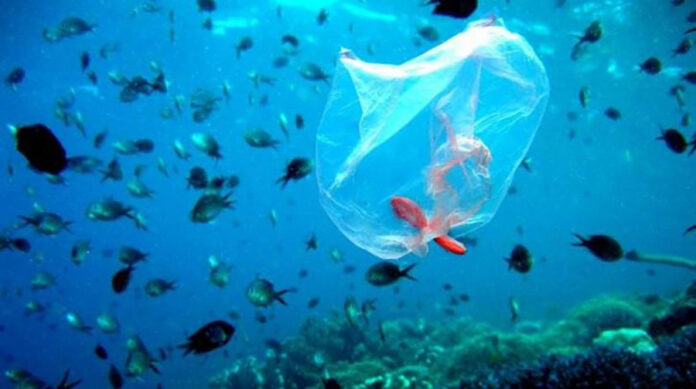June 8 was the World Oceans Day. On this occasion we publish an article, initially published in Greek in the Xekinima website.
Last April, the US National Oceanic and Atmospheric Administration (NOAA) recorded the highest sea surface temperature on earth since records began. According to NOAA, the average ocean surface temperature reached 21.1 degrees Celsius, surpassing the 21 degrees that was the highest temperature so far (recorded in 2016, in conditions that favoured this rise as the El Niño phenomenon was in full swing).
The recent rise occurred despite the fact that for the last three years the tropical Pacific Ocean (the part of the Pacific around the equator) has been experiencing the La Niña phenomenon (i.e. cold sea currents prevail). Now, a key concern of scientists observing the phenomenon is that the next El Niño outbreak, expected in the summer and autumn, could lead to even greater warming.
Meanwhile, as ocean warming continues, the risk of rising sea levels increases. On the other side of the Americas, on the Atlantic and particularly around the Gulf of Mexico, there has been a greater than expected rise in sea levels since 2010. This is causing concern for the safety of coastal residential areas such as New Orleans, Miami, Houston and others.
Something similar applies (with differences of course) to the entire world, but countries such as the small island states in the Pacific Ocean -Tuvalu, Vanuatu, the Marshall Islands and others- are at even more immediate risk.
Endangered species
The combination of warming seas and pollution of all kinds (from plastics and microplastics to oil and gas rig spills, industrial, chemical and even nuclear waste that in one way or another find their way to the sea) threatens countless marine plant and animal species. Among those most at risk, according to a study by the International Union for Conservation of Nature after assessing 140,000 species on the basis of their population and the changes it has undergone over time, are corals, whose numbers are declining most rapidly.
Research in 2018 warned that a potential 1.5 degree Celsius rise in global temperatures could lead to the extinction of 70-90% of corals.
By current standards, such a rise in temperature (which is expected to be reached by 2030) would lead to the extinction of 99% of the world’s corals. Along with corals, thousands of species that live and depend on coral reefs, from sponges and molluscs to sea turtles, sharks and rays, etc., are at risk of being lost.
Plastic pollution
171 trillion plastic particles are estimated to be in the world’s oceans today, which if they could be collected would weigh 2.3 million tonnes. According to new research, if no action is taken to end plastic pollution, by 2040 this number could increase by 2.6 times!
Plastic pollution is killing millions of marine species, from plankton and fish to seabirds and large mammals such as dolphins, whales, etc. Seabirds in particular, which not only eat but also feed their young with pieces of plastic, are constantly facing new risks associated with this “diet”.
Today, more than 90% of all seabirds have plastic particles in their digestive tract, and a new type of disease (named plasticosis) has recently been described in a particular species of bird (flesh-footed shearwater) which is the result of plastic consumption and affects the stomach glands, restricting digestion.
The importance of the oceans
As with all ecosystems, the world’s oceans and seas are not just ‘beautiful places’ that we enjoy for their aesthetic value. The oceans produce about 50% of the oxygen in the atmosphere thanks to the photosynthesis that feeds phytoplankton and other marine plant life.
Marine organisms provide food not only for other marine species, but also for countless terrestrial fauna, including humans, with many communities around the world relying almost exclusively on fishing for their survival.
So rising ocean temperatures, uncontrolled pollution, and the extinction of marine species are having significant impacts outside the water. At the same time, as the ice at the world’s poles and in the great mountain ranges melts and water levels rise, countless animal species will be threatened or displaced. Among them, human communities will be forced to become refugees.
Inequality and environmental destruction
The UN’s International Organization for Migration predicted last year that 1.2 billion people will be environmental refugees by 2050.
Many among these people will be the ones who live in coastal areas. And as is always the case, the rich will have no difficulty finding shelter, unlike the poor who will starve, drown, and see their homes destroyed by fires, floods, hurricanes and other extreme weather events.
There is no aspect of developments, be it the environment, wars, rivalries and inequalities, in which capitalism has not created a nightmarish future for the majority of the world’s population. The active resistances and movements built by the victims of these policies, the working people, the poor and the oppressed, are the only hope for averting disaster and laying the foundations for an egalitarian society on a habitable planet.



